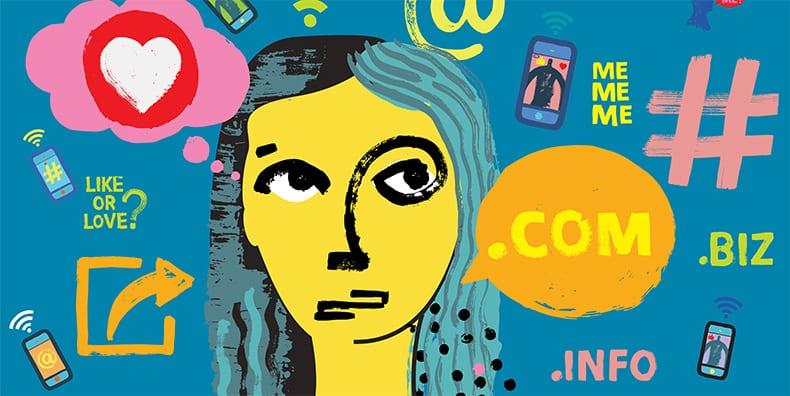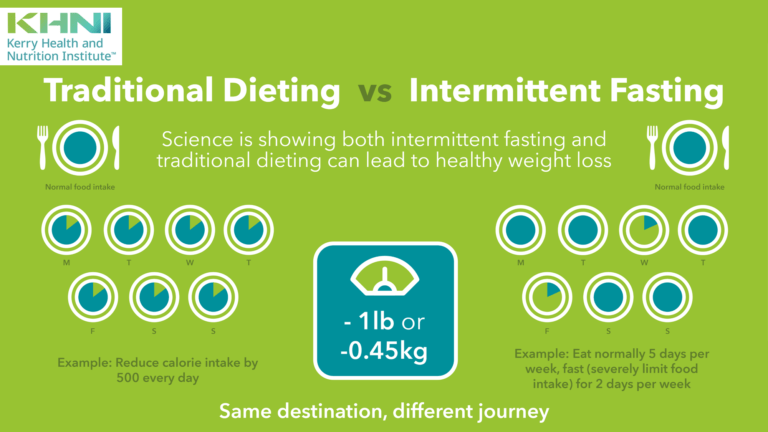With bipolar disorder, we’re more likely to become overdependent on our digital devices. Here’s how personal tech can affect our moods—plus tips for self-protection.

Smart Devices & Social Media
Are we too attached to our digital devices? That question has been debated for almost as long as the iPhone has been around, giving rise to the first National Day of Unplugging in 2010. (This year’s annual observance of “a 24-hour respite from technology” starts at sundown on March 3.)
Back then, the dialog revolved around stress—the way cell phones and home computers encroached on personal time and the psychological toll of being constantly connected.
That’s more relevant than ever, given mobile Web access on smartphones, laptops, and tablets. Meanwhile, Facebook spawned a social media world of all-consuming blogs, posts, and newsfeeds. And there’s more than a decade’s worth of research documenting mental health concerns related to personal tech. (There’s even an academic acronym: PSU, for problematic smartphone usage.)
The much-discussed specter of “mobile phone dependence”—not an actual diagnosis—has given rise to terms such as nomophobia (no-mobile-phone-phobia), textiety (feeling bad about not getting text messages, especially immediate replies), and FOMO (fear of missing out).
A number of studies have noted a connection between having a psychiatric diagnosis and signs of nomophobia. For example, a study of 1,400 university students in Iran found an increased chance of becoming overly dependent on smartphone access if there is a preexisting anxiety or mood disorder.
That’s a double whammy for individuals with bipolar disorder since anxiety is a common co-diagnosis. Here are five more reasons to stay smart about your screen time.
#1 Blue Light & Bad Sleep
Computers, tablets, smartphones, and flat-screen TVs give off “blue light,” or wavelengths in the blue band of the visible light spectrum (as in the rainbow). Blue light is a major cue for biological processes known as circadian rhythms—and science has found that people with bipolar disorder tend to be especially sensitive when those rhythms go off-beat.
Case in point: Melatonin, a hormone that rules our sleep-wake cycle. The pineal gland produces melatonin in an ebb-and-flow cycle synced to sunlight, the major source of blue light.
Lower levels of melatonin leave us more alert, while higher levels ease us toward sleepiness. In nature, the coming of daylight dials down the pineal gland so that we’re ready to be up and about. Melatonin production picks up again as the day wanes, preparing us for a good night’s rest.
In modern life, however, using digital devices in the evening extends exposure to blue light and interrupts the body’s normal progression toward sleep. And good sleep, of course, plays a fundamental role in managing bipolar disorder.
“People with bipolar disorder tend to have very disrupted circadian rhythms and disrupted sleep patterns, so anything that disrupts it further is going to be worse for them,” says Colleen A. McClung, PhD, a professor of psychiatry and clinical and translational science at the Center for Neuroscience at the University of Pittsburgh School of Medicine.
“If you’re not sleeping and you don’t have good, steady circadian rhythms, you’re more susceptible to any type of mood disturbance—either manic or depressive,” she adds.
There’s some evidence that eyewear tinted to filter blue light may be protective. In a small study of individuals hospitalized for mania, published in the International Journal of Psychiatry and Neurosciences, those who wore the tinted eyewear while using their phones scored 14 points lower on a mania evaluation after one week than a comparison group who wore glasses with clear lenses.
If reading on your tablet is part of your bedtime routine, try listening to audiobooks, podcasts, or meditation apps instead. Or go radical and pick up a printed book or magazine, since sleep experts recommend keeping devices out of the bedroom altogether.
Quick tips: Set night filters on your devices to reduce blue light exposure in the evening. Turn off screens an hour before bedtime. Get outside in the morning to help your circadian rhythms reset.
#2 Negativity & Emotional Risk
When you’re adrift in the sea of 24/7 information and entertainment, there’s no telling when a rogue wave may upend you—an unfortunate scene in a TV show, an upsetting newsfeed, or a controversial comment on social media.
The risk only escalates when material taps into unhappy or traumatic memories.
Michelle, 39, a mental health writer and advocate, notes that TV scenes taking place in psych wards or depicting characters in the midst of a destructive mood episode can be challenging to watch when you’ve been through it.
“Save them for when you’re feeling strong, not when you’re vulnerable or in the middle of going weeks without sleep, or experiencing psychosis,” she advises.
Michelle curates her viewing content as a general rule to protect her emotional balance.
“I try to avoid television or entertainment that might be triggering,” explains Michelle, who has developed strong self-care habits over 20 years of living with bipolar I disorder.
It may seem like watching a comedy would be a guaranteed mood-lifter, but even that can backfire for Michelle when she’s in a depression.
“It’s difficult to find anything funny, so you end up beating yourself up for not getting the jokes,” she says.
At the opposite end of the spectrum, some media consumers immerse themselves in distressing material.
“You’ve probably heard [of] Doom scrolling—endlessly scrolling your social media feed to see the negative stuff out there,” says Ken Yeager, PhD, director of the Stress, Trauma and Resilience (STAR) program and a professor in the department of psychiatry at Ohio State University Wexner Medical Center.
Yeager says spending too much time in that headspace can make the world seem like “a less safe place.” In a national survey of 2,000 people commissioned by the Wexner Center, 56 percent were trying to change their screen habits because of negativity.
Because the human brain evolved to be especially alert to threats, negative content has a stronger emotional impact than feel-good information.
“We’re hardwired to see the negative because that helps with survival, but it can take a toll by dragging down your mood, self-worth, and view of yourself in the world,” Yeager says.
“The negative screams at you, but the positive only whispers. You really have to teach yourself how to hear the whisper.”
Quick tips: Be conscious of the emotional cost of staying informed and connected. Give yourself a break from platforms that are particularly heavy. Set limits on time spent scrolling through negative content and set an alarm to enforce them. Make conscious choices about entertainment that is less likely to be triggering for you.
#3 Social Media & Self-Worth
Sometimes positive content—in the form of other people’s posts about their family’s achievements and pictures of their lovely homes or enviable vacations—can have a negative backlash.
Critical self-judgment and low self-esteem can be aspects of the depressive mind, which doesn’t help when plunging into an environment that seems made up of shiny, happy people.
That’s why Amanda, 33, calls social media her enemy. Comparing herself to what she sees is a huge trigger for her bipolar depression.
“It affects me big-time,” says Amanda, who was diagnosed with bipolar II disorder in 2017. “I can go from having a good day to having passive suicidal thoughts just from being on social media.”
Amanda not only limits herself to 15-minute blocks of time on social media or the Internet but also imposes a social media ban after 8 p.m. on weekdays and all weekend.
Emily, 56, takes a different approach. She was employed as a computer programmer before going on disability due to her bipolar I. In addition to her job, she lost her marriage and extended family of in-laws. Plus, she deals with a congenital bone disorder.
She has since resettled in her own home and returned to school to pursue a degree in counseling. For the most part, she feels that she’s doing well, given the challenges posed by her physical disability and bipolar symptoms.
Still, the changes in her life can start to eat at her when she’s scrolling social media. She won’t follow certain people she knows will make her feel down about herself.
“I don’t want to feel bad about the fact that I did have a really successful career and now I’m going in a different direction,” she says.
Another solution she’s come up with: Channeling her screen time into pursuits that further her values and enrich her life. She’s the go-to techie volunteer for her church and hosts a lunch group and book club—all via screens.
Quick tips: Recognize negative self-talk when you’re in comparison mode, and remind yourself that social media is largely an altered version of reality. Find ways to use your screen time to contribute, create, or pursue goals.
#4 Screen Time & Mood
Sometimes the issue isn’t what you access, but how long you spend on your phone, tablet, and computer.
“For me, what I’ve noticed is too much screen time or inactivity can lead to depression,” says Michelle, the mental health writer.
Researchers have noted that connection as well. A study of college students found a link between increased social media use and increased rates of depression—as well as anxiety, loneliness, and impulsivity.
A study published in the journal Preventive Medicine Reports found a significant association between depression and spending four or more hours daily watching TV and/or using the computer.
There’s some question as to whether excessive screen time causes depression, or whether people who are depressed tend to retreat to screens. The same is true for mania, notes Grace Dowd, LCSW, a psychotherapist in Austin, Texas.
“With bipolar disorder, it’s a chicken-and-egg situation,” she says. “Did you stay up all night scrolling because you were already manic, or did staying up all night scrolling and not sleeping sent you into a manic episode?”
Going online while dealing with mania raises the risk of impulsive spending at e-tailers and posting on social media without your usual mental filters, which can lead to disclosing things you didn’t want the world to know or getting into destructive “flame wars.” Starting a “screen fast” when you sense a mood shift helps protect you from future regrets.
Quick tips: Practice being “unavailable” sometimes, like in the days before communication devices went mobile. Try leaving your phone behind for short periods, perhaps when you’re walking the dog or working in the yard. Challenge yourself to a day without social media.
#5 Missed Opportunities & Mental Wellness
Dowd, the psychotherapist in Austin, recently heard that the year the iPhone came out, chewing gum sales decreased drastically because people stopped looking around while at the checkout counter and stared at their phones instead.
Smartphones have become a boredom buster in many situations. We hop on when idling in line, at a stoplight, in a waiting room. But there’s no doubt the devices replace more constructive activities as well.
Dowd would love for people to be more mindful of when and how they use their phones.
“Every time you pick up your phone, notice what are you looking for and ask, ‘Is it going to bring me feelings of connection or happiness or draw me further away from that?’” she suggests.
Furthermore, Dowd points out, staying glued to the screen distracts from having quiet space to re-center, spend quality time in nature, or be present with the people and things you love, whether it’s your dog, kids, or significant other.
Having your attention constantly diverted by pings, posts, and texts takes away opportunities for what she calls “accumulating positives”—sitting outside watching the birds or taking in the feeling of the sun on your skin.
Embracing those small moments of pleasure can nourish mental wellness, providing a useful counterweight to depression’s drag.
Amanda may be strict about her social media use, but she admits that she’s prone to escapism—succumbing to the lure of her electronic devices instead of turning to healthier outlets such as or cooking.
If she’s in a bad place emotionally and turns on the TV, she could end up there for hours and hours.
“I just use the screen time to numb everything that’s going on, so I really have to be cognizant when that happens and try to prevent it,” she says.
Again, the key is to be mindful about your choices. Are you looking for a lighthearted lift, taking a break to rest and regroup, or “comfort consuming” to bury your emotions?
Avoidance may help in the short term, but you’ll be better served if you face up to your feelings through writing, talking with friends, or making notes for your next therapy appointment. Distraction qualifies as a recommended technique for dealing with down moments, but passive screen use won’t give you the same mood boost as getting a little exercise or accomplishing something small.
Quick tips: Mute notifications that alert constantly. Limit screen use while participating in other activities so you won’t miss moments that create contentment and happiness. Pay attention to why you’re on your device and whether some other pursuit would be better fertilizer for your mental health.
Printed as “Digital Detox,” Winter 2021
The post Digital Detox: 5 Reasons to Reconsider Your Relationship with Your Devices appeared first on bpHope.com.
This content was originally published here.




















